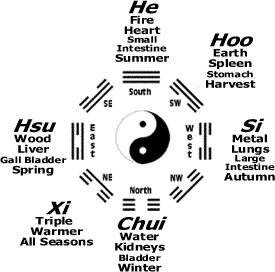Meditative tones have been used for centuries to enhance a person’s internal development or experience a deeper religious state. With enhanced technology over the last few decades, interest and use of meditation tones has hit an all new fever pitch. But questions remain. Do meditation tones work? If so, how? And which ones should I try out?
Meditation tones are specific series of notes at specific frequencies that are intended to influence brainwave frequencies to bring a person into a meditative state, a deeper meditative state, or are designed with a specific purpose such as healing, concentration, or better sleep.
This article is intended to clarify how meditation tones are used in meditative sets. There is an immense world history of chanting, singing, and using tones in meditation. No religion or spiritual pursuit is devoid of them. Equally so, tai chi and qigong have sets that incorporate music and tones into the practice.
“The kinesthetic, auditory, and physical feedback of meditation tones enhance progress.”

Do Meditative Tones Really Work?
There is a lot of controversy over the use of meditative tones and whether they actually do anything. Seriously, we are just listening to something and expecting a better outcome. Can that be real? The doubt is justified because of the simplicity of the suggestion and because people have tried out meditation tones without much success. I love debate and on this topic as it is sorely needed. Let’s present two scenarios.
Scenario 1: A person learns the wrong use of tones, this leads to poor development, they miss the benefit, think it is malarkey, and quit before their progress takes off.
Scenario 2: A person learns a qi gong set with meditative tones, the vibration makes them actually “feel” energy traveling in them, the kinesthetic, auditory, physical sensation keeps them highly focused, they benefit from the set’s intent.
How did scenario 1 happen? Here are my thoughts:
Poor instruction: It is so easy to receive poor instruction on qi gong sets with meditation tones. Not because it is difficult but because 1) newish sounds have to 2) occur specifically on an inhale or exhale with 3) the focus on a specific part of the body. Teachers, this one is on us. We have to make sure we are providing accurate instruction or taking our class or ourselves to a workshop. Not hard to do, just specific.
Wrong debate: Debate IS needed but not on whether you inhale or exhale or think of organs or think of meridians, etc. People tend to learn one tone set and then see it as the golden rule. The truth is that all combinations of tones, organs, and meridians, are used in different sets for different purposes. Let’s keep the debate on accuracy of actions, not right and wrong. I also feel there is no debate as to if tones are beneficial. Tones are not part of every qi gong / meditation set. However, if you have received instruction that includes tones, the difference is dramatic. Here are a couple examples:
The Six Word Secret (lie zi jue)

This is taken from Kenneth Cohen’s extremely comprehensive The Way of Qigong. The Six Word Secret is a Qigong set that is designed to expel negative or stagnant chi for the purpose of health or to make room for healthy chi to enter. It is attributed to a Buddhist scholar from the 6th Century. Six main organ systems related to health each have a corresponding tone. Imagine you are actually inhaling into the organ and emptying it out. Inhale through the nose and exhale through the mouth, twice for each tone.
Yes figure out where your organs are! (5 seconds on Google). Trust me that eventually you will actually feel your organs but only if you are concentrating on the right place.
| Organ | Tone |
|---|---|
| Triple Burner (whole torso) | Seeeeeee |
| Lungs | See-ahh |
| Kidneys | Chrroooeee |
| Liver | Shhhhuuu |
| Heart | Hoo (like in hook) |
| Spleen | Who |
Standing Pose with Meditation Tones
This exercise is taken from an October 2009 interview of Chen Youze from Kungfu Magazine. It is designed to help draw chi down into the dantian in order to be built up and used. The process involves standing meditation in horse stance, with the right hand in front of the heart and the left hand behind the back at the ming men.
These meditation tones are thought, but not said, and breathing goes in and out of the nose because the mouth is closed. Breathe deeply and feel the tone descending with the breath to the dantian. All four tones would be considered one cycle. Continue for approximately 20 cycles.
| Breath | Tone |
|---|---|
| Exhale | Heeee |
| Inhale | Sheeeee |
| Exhale | Shuuuu |
| Inhale | Tschweeeeey |
In summary, meditation tones are used for specific purposes, are aligned with specific breaths, and relate to specific locations that they arrive at and interact with. The hard part is not performing an energy set that includes meditation tones but in finding an instructor.
As you can see, there is nothing difficult about making a sound and breathing in and out. Use of tones should be pursued because the feedback is great and it dramatically enhances your ability to pay attention. However, proper instruction is mandatory when using tones or you cannot get the benefit that that tone set is designed for.
I know you’re going to ask! What else? Along with meditative tones in your tai chi practice and qi gong you should also rethink your breathing and your posture.

Meditation Tones on YouTube
It would be silly to talk any further about what tones are when we can listen to a bunch of different examples of meditation tones on YouTube. Above we (of course) focused on the relationship between meditation tones and tai chi but no that no religion or eastern practice is without some form of repetitive mantra. Secondly, there are different types of meditation tones and the sounds are also used for different purposes. Here are some YouTube meditation tone examples for the most common uses, improving sleep and healing an ailment. I also wanted to show you binaural tones in case that is a new topic for you.
Meditation Tones for Sleep
Who doesn’t want to sleep better these days? Stress-induced insomnia, too much screen time, too much caffeine… We’ve all been warned off the things that are disturbing our sleep. But what do we have to combat it? Yes, stop or do less of those things that hamper sleep. But, you can also do more of something else. I am a big advocate of qi gong to help with sleep but people are also finding that they are receiving huge benefits from using meditation tones for sleep. You can use them beforehand to wind yourself down or plug in your earbuds if anxiety is going bump in the night.
Healing Tones Meditation
There are dozens of reasons someone would use healing tones meditation recordings. The most obvious is that they are recovering from something physical but there are additional benefits. It is theorized that healing tones improve our energy more quickly after we have already mostly recovered. For example, after getting a cold when you are ready to go back to work but are still not yourself. There is also changes in mood which if you take a broader view of “healing” you could see how you could move from a negative place to having a more positive outlook.
Deep Meditation Tones
Deep meditation tones are intended primarily for concentration, problem solving, and inquiry. They are neat to play with when you are studying instead of just listening to music. If you are responsible for some deep thinking at work or just enjoy the analytical thought progress, check out the free tracks at iAwake.
Binaural Tones Meditation
Binaural tones meditation is a combination of healing and deep meditation tones with some science to back it up. Many meditation tones are actually binaural tones that are produced to create brainwave entrainment. Basically, two independent tones are introduced which the brain combines and interprets as a specific tone. Binaural tones mediation targets specific tones to move you in and out of deep meditation states. We dedicated a whole essay to brainwave entrainment if you want to find out more.
Are you new to meditation? Start here: Why is Meditation Important?



Amazing! Always something new to learn. Thank you so much! Question? The average person has about a two octave range in terms of pitch. Are the tones pitched? Where in the voice? High, medium, low, specific pitches? Do the tones change in pitch? Rising, falling, straight, etc.?
As always thank you for the ongoing information. I so appreciate all that you post.
Hi JSB,
I don’t have a definitive answer, nor do I think one is really possible, so let me thank you for your great question and let’s just add to the topic with a debate and more questions. Soo… Yes tones are at different pitches but I don’t have the ear-training to know which pitches. Also, if I weigh 200 lbs and you weigh 100 lbs and we both say “ohm,” that will be different pitches. If you and I were both singers, yes we could harmonize together but probably not likely.
Here is the other side of it, material (organ tissue) and colors vibrate at a specific frequency. So that tells me that the tone (maybe pitch?) are definitely important.
Point two, I just took a jog around YouTube and saw many western and eastern teachers talking about tones. All were instructing on the tone itself (“it’s ooohhhmmm, not oomm”) but I didn’t see anything on pitch. Not very scientific but a bit telling. In writing this, I bet someone posts someone talking about pitch! Please do if you find it 🙂
Point three, to your question: “Do the tones change in pitch?” I don’t know. In the qi gong tones mentioned in this article, they don’t seem to until you are at the end of your breath (which you shouldn’t be). On the other hand, singing traditions are all over the pitch map so, yes?
Point four, what I believe. So, if you try either of the suggestions in the essay or a different one you know about, you can actually move the feeling around your body. The feeling and location should be the focus, I believe. For example, say OOHHM. Lower the pitch and slow it down, really slow, until you feel the vibration in your throat and then travel up to your head. Your head should vibrate and maybe your nose tickle a bit. What pitch is that? I have no idea but it feels right. I used a piano turner app and for me it starts at 98htz – G and goes up to A flat -103htz. Now try HHAAA (110htz – A for me). It should start out airy and then vibrate the heck out of your heart area. If your pitch goes up it vibrates less which I interpret as “less-good.”
Point five, which throws a huge curve ball in a Chinese-philosophy sort of way. In the Chen Tai Chi Standing Tradition, the tone is said in your mind! Not even voiced!! So what is the pitch of a sound that you think about? Wrap your mind around that puppy! It totally aligns with ideas around manifestation and Quantum Mechanics’ Observer Effect. What is the sound of one vocal fold clapping?
Super cool things to think about JSB. Ultimately, I hope this article inspires more to try out qi gong meditation with tones.
I usually get an e-mail notification when there is a post here, but did not get one this time. So a very long delay in my response. Once again thank you so much for your observations, advice and insight.
Just to add some more to talk about. I am retired now, but trained and sang opera professionally for 40 years. At the height of my career I had a 3 1/2 octave range and considered G3 (G below middle C) as my optimum pitch – in other words when speaking, this would be the middle of my range and allow me to inflect up and down equally. Playing around with the various meditation tones you have listed, I find that G3 (for me) achieves good vibration through the frontal mask of my face and down through the torso. I feel good! I will continue to experiment and see what and where it all leads to.
On side note, I visited the Buddhist Stupa in Sedona, AZ. A young man was sitting and chanting. My guess is that his pitch was at least C2 if not lower and he remained on the same pitch for very long phrases of his chant using one single breath. Amazing to witness. I could sympathetically feel his vibrations and noticed wonderful feelings (like shivers) running through my body. Sedona tends to do that to people!
A composer friend of mine says that he first hears his music in his head and he knows exactly what the pitches are. Later he writes it down. Chen style composing I guess.
I will continue to play. Thanks again for all the information.
This is really interesting. I don’t have singing background or musical knowledge and am more at the level of trying not to feel embarrassed from making funny noises but it is nice to hear that the suggestions about tones makes sense from someone who does. For all of us, making the body vibrate inherently feels good. I think most of us get doses from hearing music. I try to imagine the level of intelligence and internal development someone would have to have, 2000 years ago, to practice and suggest tones based on frequency/vibration.